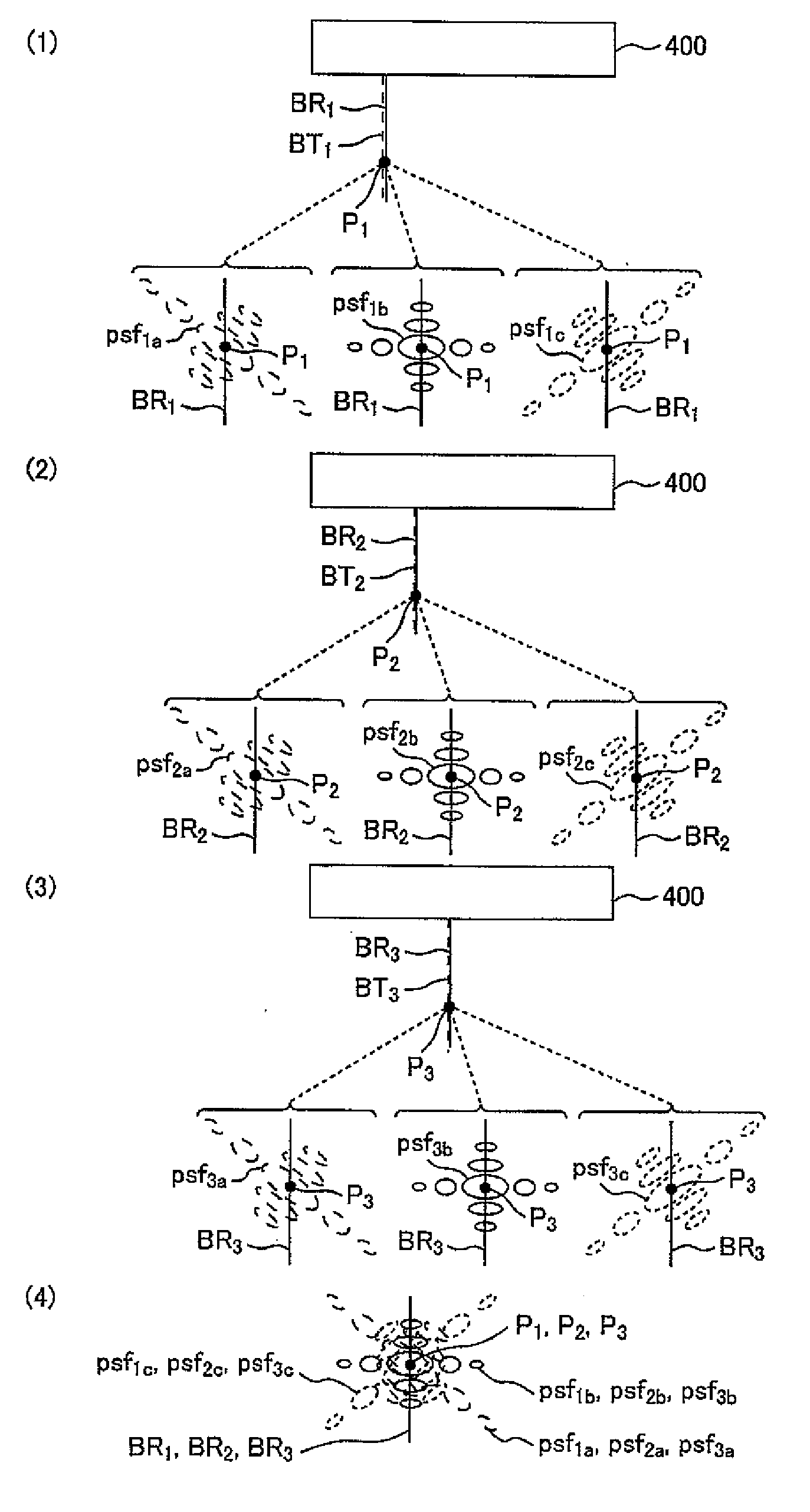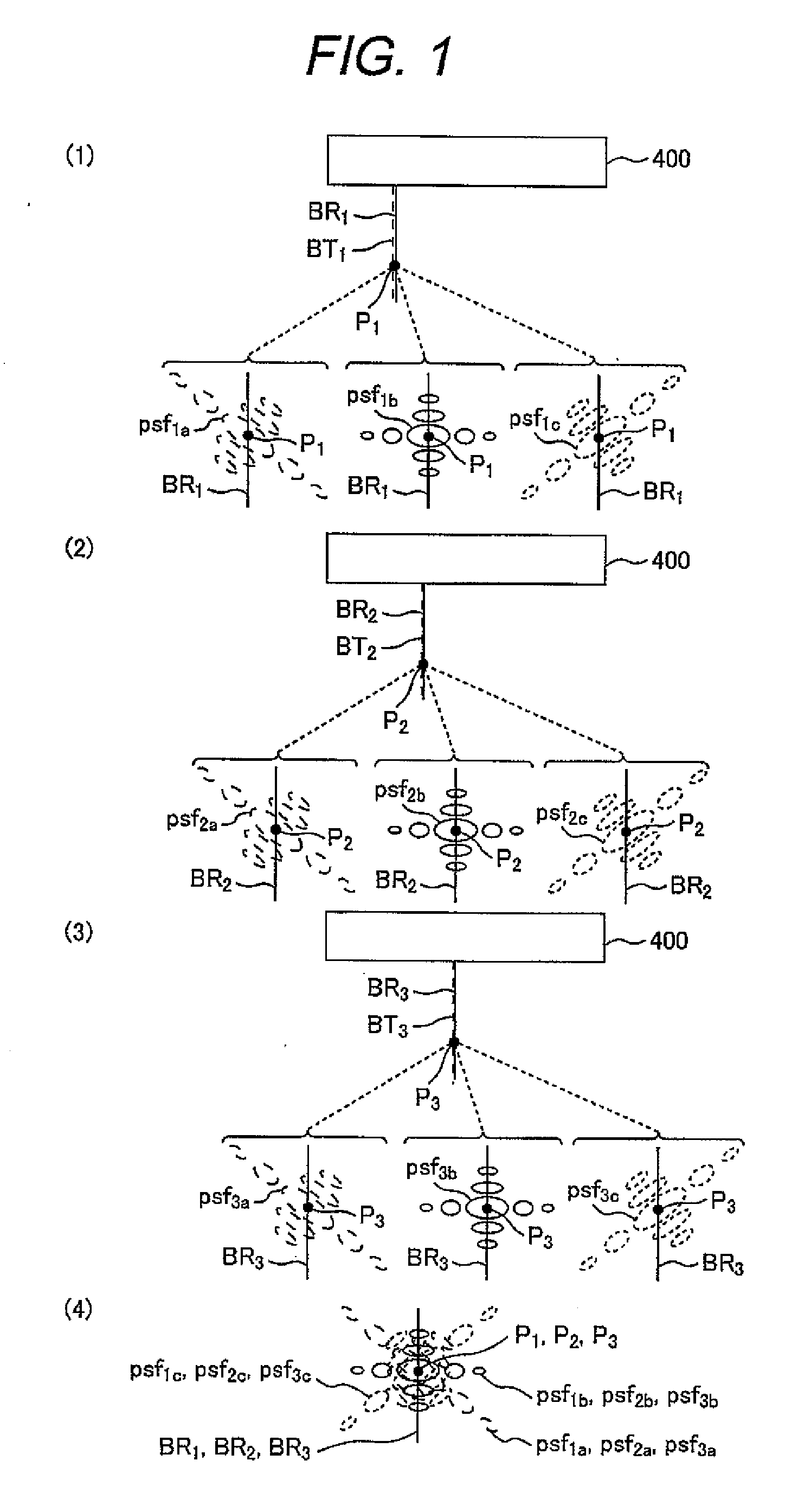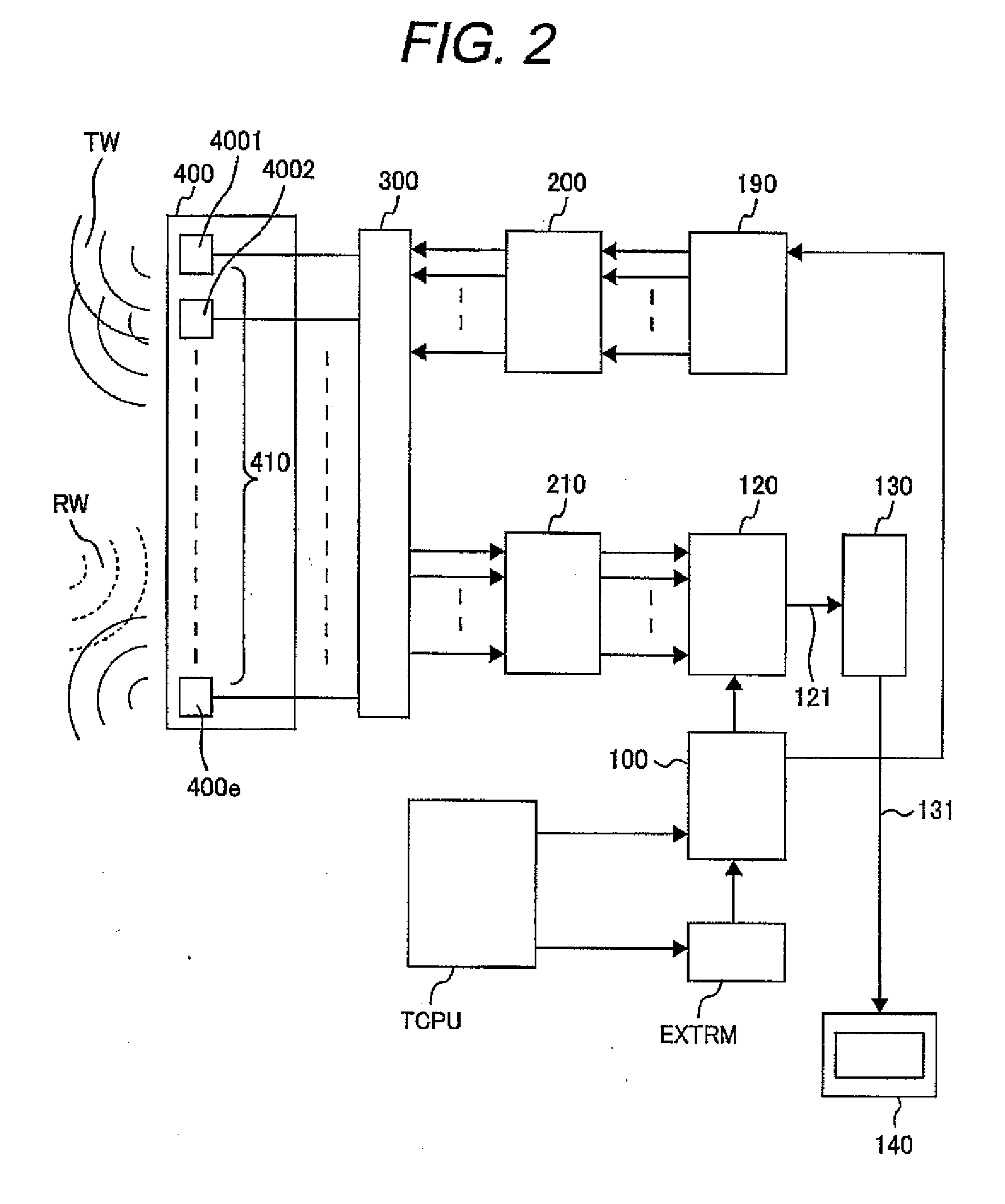Ultrasound imaging device
a technology of ultrasonic imaging and ultrasonic radiation, which is applied in the field of ultrasonic imaging devices, can solve the problems of unavoidable zsub, zsub>1/sub>, zsub>2/sub>, zsub>4/sub>, etc., and achieve the effect of reducing the degree of image deterioration and enhancing isochronism
- Summary
- Abstract
- Description
- Claims
- Application Information
AI Technical Summary
Benefits of technology
Problems solved by technology
Method used
Image
Examples
first embodiment
[0025]FIG. 2 shows the configuration of an ultrasound imaging device according to the present invention. A probe 400, which transmits and receives ultrasound waves, incorporates a transmission / reception element group 410 formed by transmission / reception elements 4001, 4002-400e that provide electroacoustic conversion. In most cases, the transmission / reception elements 4001, 4002-400e are made of piezoelectric materials or other ferroelectric materials that generates a pressure from a voltage when transmitting an ultrasound wave and generates a voltage from an ultrasound wave pressure when receiving an ultrasound wave. As is well known, an ultrasound imaging device gives different voltage waveforms to the transmission / reception group 410 to emit a transmission sound wave TW into a living-body, which is a subject, receives a reception sound wave (echo) RW, which is reflected from a specific point of the living-body, compensates for the arrival time difference and phase difference betw...
second embodiment
[0040]A typical configuration for enhancing the anisotropic nature of spatial sampling will now be described as a second embodiment. First of all, the principle of anisotropic nature enhancement will be described with reference to FIGS. 10(1) and 10(2). A case where a boundary OBND exists in an imaging region as shown in FIG. 10(1) to cause a strong reflector distribution change that is not orthogonal or parallel to a transmission / reception beam BS will be discussed. When a conventional technology was used, the same point spread function psfb was used at the same depth (at the same distance from the aperture) as point PS no matter whether the anisotropic nature of such reflection exists. Meanwhile, although the boundary OBND is long in a particular direction, the direction of the dominant wave number vector having the best spatial resolution of the point spread function psfb (the direction of the transmission / reception beam BS) is not orthogonal to the direction in which the spatial...
PUM
 Login to View More
Login to View More Abstract
Description
Claims
Application Information
 Login to View More
Login to View More - R&D
- Intellectual Property
- Life Sciences
- Materials
- Tech Scout
- Unparalleled Data Quality
- Higher Quality Content
- 60% Fewer Hallucinations
Browse by: Latest US Patents, China's latest patents, Technical Efficacy Thesaurus, Application Domain, Technology Topic, Popular Technical Reports.
© 2025 PatSnap. All rights reserved.Legal|Privacy policy|Modern Slavery Act Transparency Statement|Sitemap|About US| Contact US: help@patsnap.com



